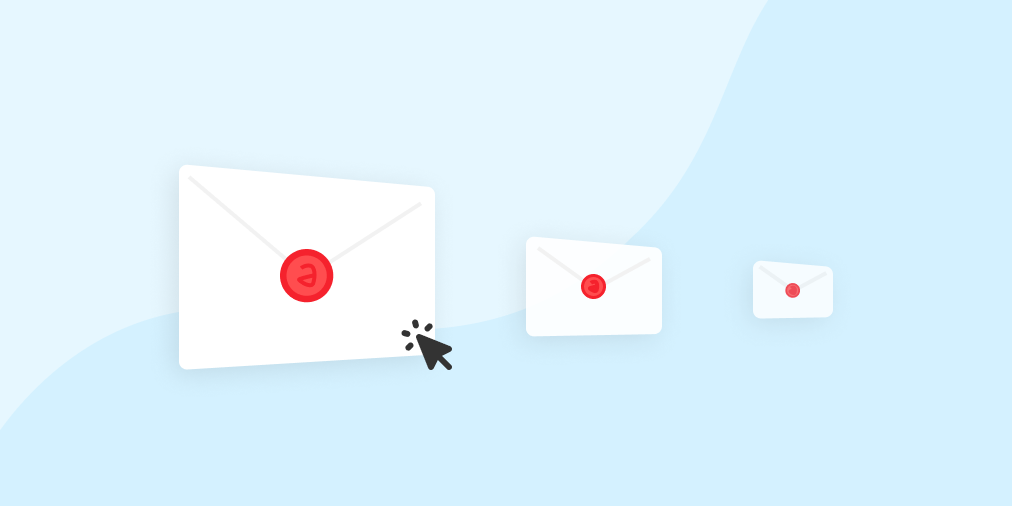How to Monetize Your Email List
Email has one of the highest ROIs of all marketing channels, bringing in an average of $36 for every $1 spent. And with over 4 billion daily users, email is one of the most used (and longest-lasting) communication methods on the planet.
With these kind of numbers, it's not surprising the email marketing industry is projected to reach $17.9 billion by 2027.
A large audience, positive ROI, and rapid growth? Music to the ears of anyone hoping to build a profitable email list or newsletter.
But monetizing your email list isn’t always straightforward.
Email is intimate. Unlike social media or blogs — where you put your content on display for everyone to see — email arrives in each individual inbox. This personal connection is great for marketing. But also makes receivers more sensitive to advertising.
Here are 9 methods to make money from your email list that won’t drive subscribers away or land you in the spam folder.
9 ways to monetize your email list
How do you respect the sanctity of the inbox while leveraging the rapid growth of this channel? The key is aligning your email monetization practices with what your users already expect to see in your emails.
If you can combine genuine reader value with a financial upside, you're in a good place to monetize your email list and build trust with your audience at the same time.
Below you'll find nine ways to do that, how much they pay, and tips for building an effective email monetization strategy.
Here's how to monetize your email list:
- Affiliate marketing
- Paid memberships or community
- Advertising and sponsorships
- Sponsored content
- Info products
- Paid newsletters
- Consulting
- Tripwire offers
- Email courses
1. Affiliate marketing
Affiliate marketing is one of the most common ways to monetize an email list.
In a nutshell, affiliate marketing means promoting other people's products for a share of the profit through an affiliate link. Popular ways to promote affiliate links include blog articles, social media posts, and of course, through email newsletters.
With an email newsletter, you can include your affiliate links directly in your emails to promote those products to your readers.
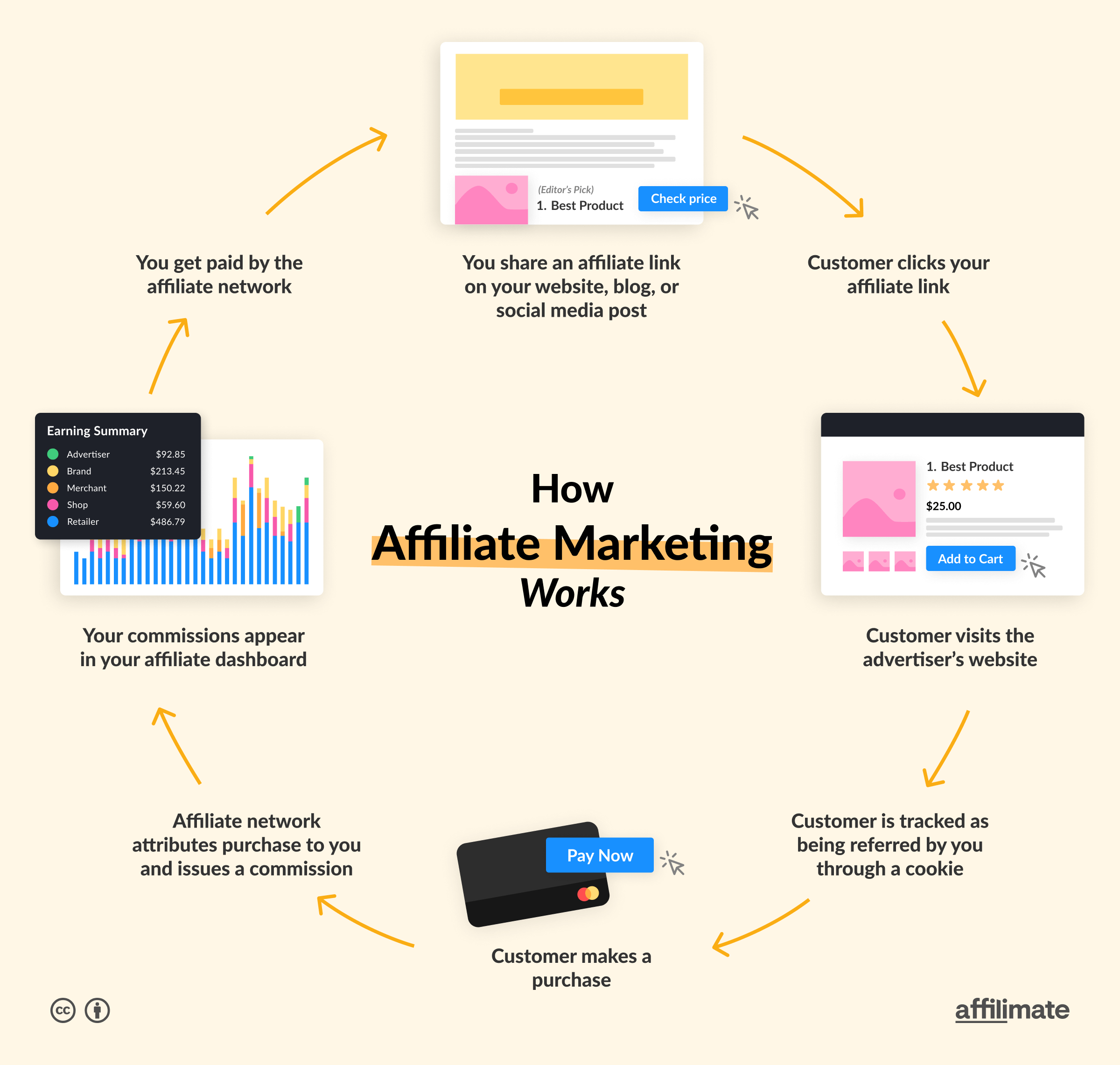
Depending on the affiliate program, you can get paid for each click, lead or sale that comes from your email affiliate link.
To succeed with this email monetization technique, ask yourself what your audience wants from your email list. Then, match your offers to fit their intention. Sending irrelevant affiliate offers not only converts poorly, but prompts people to unsubscribe.
Here's how Andrea Bizzotto thinks about it, as a technical course creator who also promotes other creators' courses as an affiliate:
"Products are only valuable if they are marketed to the right audience.
That's why I only ever promote products that I know are very relevant for my audience.
I would never recommend or promote a product unless I have used it and I'm confident that it's worthwhile."
— Andrea Bizotto, Google Developer Expert and affiliate marketer
Our top affiliate marketing tip is to experiment and figure out which products resonate with your audience.
Pete Reynolds, co-founder of the Discerning Cyclist, does this by asking his audience for product recommendations. He then recommends these crowd-sourced suggestions to his email list and on his website.
“I often ask my audience for product recommendations for a specific category. I then collect the best answers and ask those people if they'd mind me quoting them on a post talking about the best products in that category.”
— Pete Reynolds, Discerning Cyclist
Here's an example from Pete's website, where he shares real-life quotes and experiences from his readers next to his affiliate content:

This techniques lends extra credibility to his recommendations, since they're based on the experience of a community of cycling enthusiasts.
It's an excellent way to leverage your email list to grow the affiliate revenue of your newsletter and your website at the same time.
Head's up. Not all affiliate programs allow you to promote their products or deals through email. Amazon is one of the most popular programs that explicitly prohibits sending their affiliate links in emails.
Many email providers also don't allow affiliate links in the emails you send through their service.
Read the terms of service for both the affiliate program and email service provider before you put links directly in your emails. Otherwise, you can always send people to an affiliate landing page on your website instead of directly to the merchant.
2. Paid memberships/community
Paid access to programs or communities act like a subscription service (think Netflix). But instead of streaming movies, you entice an audience with exclusive access to content and/or communities.
Platforms like Slack, Facebook groups and Patreon work well for this type of email list monetization.
Here's an example of how one creator distributes member-exclusive podcast episodes through Patreon:
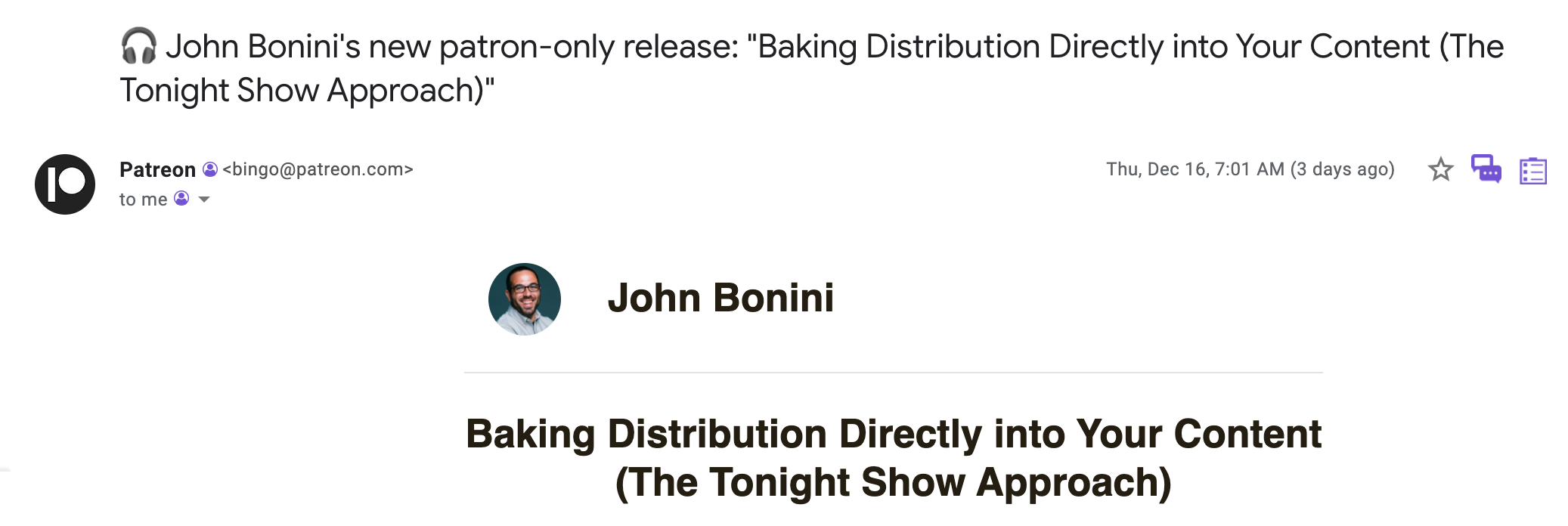
Paid memberships and communities are a good middle-ground between consulting and courses. You’ll reach more people in a community than you would through 1:1 consulting but it still has a personal touch.
Although you can outsource much of the daily work, communities need active maintenance. To provide value to your members, you or your team need to consistently engage and manage the space.
With this monetization type, you set your rates according to the value your membership provides. Although revenue from memberships is recurring, fees for some platforms can take a chunk out of your margins.
For example, Patreon takes 5-12%. Factor that in when you set your rates.
Make sure whichever forum you choose offers opportunities for members to not only interact with you but also to learn from each other. An active community adds value to your offer and reduces the time you or your team spend upkeep.
Here are some tips for launching a successful membership business:
- Launch with an initial userbase. The initial stage of growing the community is often the hardest part. Try to have at least 50 active members before you start publicly promoting your community. Iniviting even free members at the beginning is a great way to set the tone and establish the culture of your community.
- Promote your exclusive content with sneak peaks or free live sessions. This gives your audience a precise idea of what to expect and induces a bit of FOMO.
- Then, use waiting lists, free trials and sign-up discounts to build your community’s critical mass. These don't need to be permanent offers, but should help you get the traction you need to create a thriving community.
- Finally, bunde your membership with other offers — like courses and consultations — as another way to entice your audience to join.
Building a paid membership isn't easy since it requires ongoing effort to maintain and grow. But it's one of the few ways to monetize an email list that results in recurring revenue from subscribers.
Tip: Memberships have notoriously high churn. One way to combat this is by staggering the release of content and courses within your community. This will keep them interested and prevent them from logging in once, consuming the content, and canceling.
3. Advertising and sponsorships
If you have over 1,000 engaged subscribers, brands will pay you for advertising their products to your email audience.
These ads can take different forms such as display ads or native ads, depending on the brand requirements.
Email list monetization using ads is semi-passive because you are not responsible for creating the ads, but the best results usually come from writing the ad copy yourself.
Plus, you need to keep finding new brands and businesses to work with, and negotiate deliverables and rates.
Our tip? Create advertising/sponsorship pages on your website and include ad placeholders in your newsletter to help brands and businesses reach out to you. That way, you can spend less time prospecting for advertisers.
Here's how The Slice offers advertising options for brands and businesses looking to reach their email audience.

And what the ad looks like in action. In The Slice, it's often as simple as a screenshot of the sponsor's homepage:
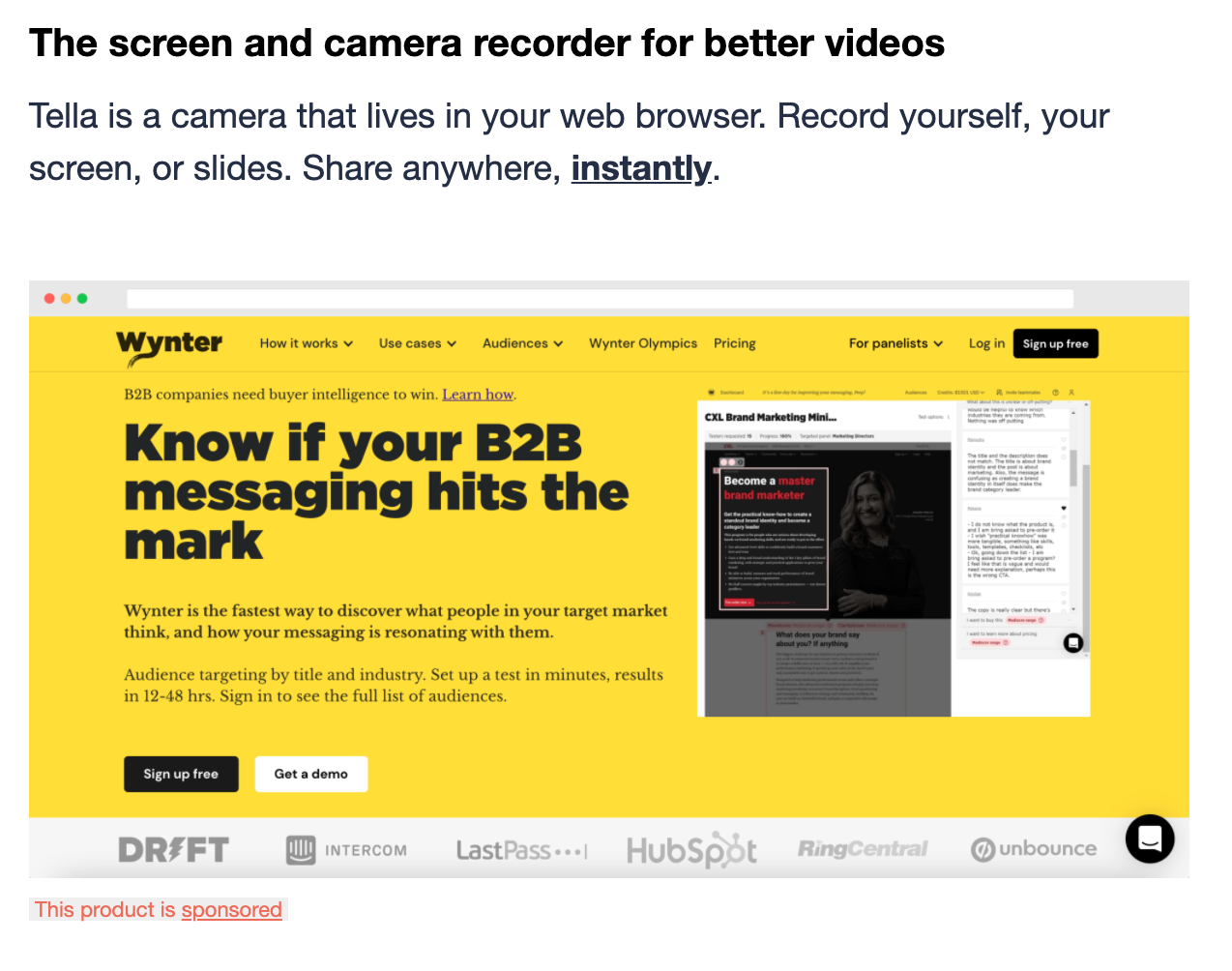
To attract repeat brand deals, your rate should be lower than the expected ROI of a campaign. In other words, if you expect a sponsor to make $1000 from an ad, the rate your charge should be less than that.
How can you calculate expected ROI?
One way to estimate this number is to take your average click through rate (CTR), multiply it by your email list size and then multiply it by the expected cost per transaction.
For example, if your CTR is 1%, your email list size is 1000 and you work with ecommerce brands that have an average order value of $10, the calculation would be:
0.01 (CTR) x 1000 (Subscribers) x $10 (Order value) = $100
With these numbers, your ad would need to cost less than $100 in order to be “worth it” for the brand. Play around with these numbers to understand how you want to approach your newsletter business.
Tracking ad success is vital. Different brands use different methods of attributing sales to your email list. Most commonly, they will use UTM campaign parameters, which will associate a unique tracking code to sales that come from your list.
Here are some tips for maximizing your from newsletter sponsorships and ads.
Tip 1: Segment your audience
Creating a profitable newsletter starts with knowing your audience. Then, selecting brands and sponsors to work with that align closely with your audiences' goals.
And there's no more efficient way to get to know your audience than allowing them to segment themselves.
Julie Dawn Fox, an award winning Portugal blogger and affiliate, asks new subscribers to self-segment through these questions in her welcome email:
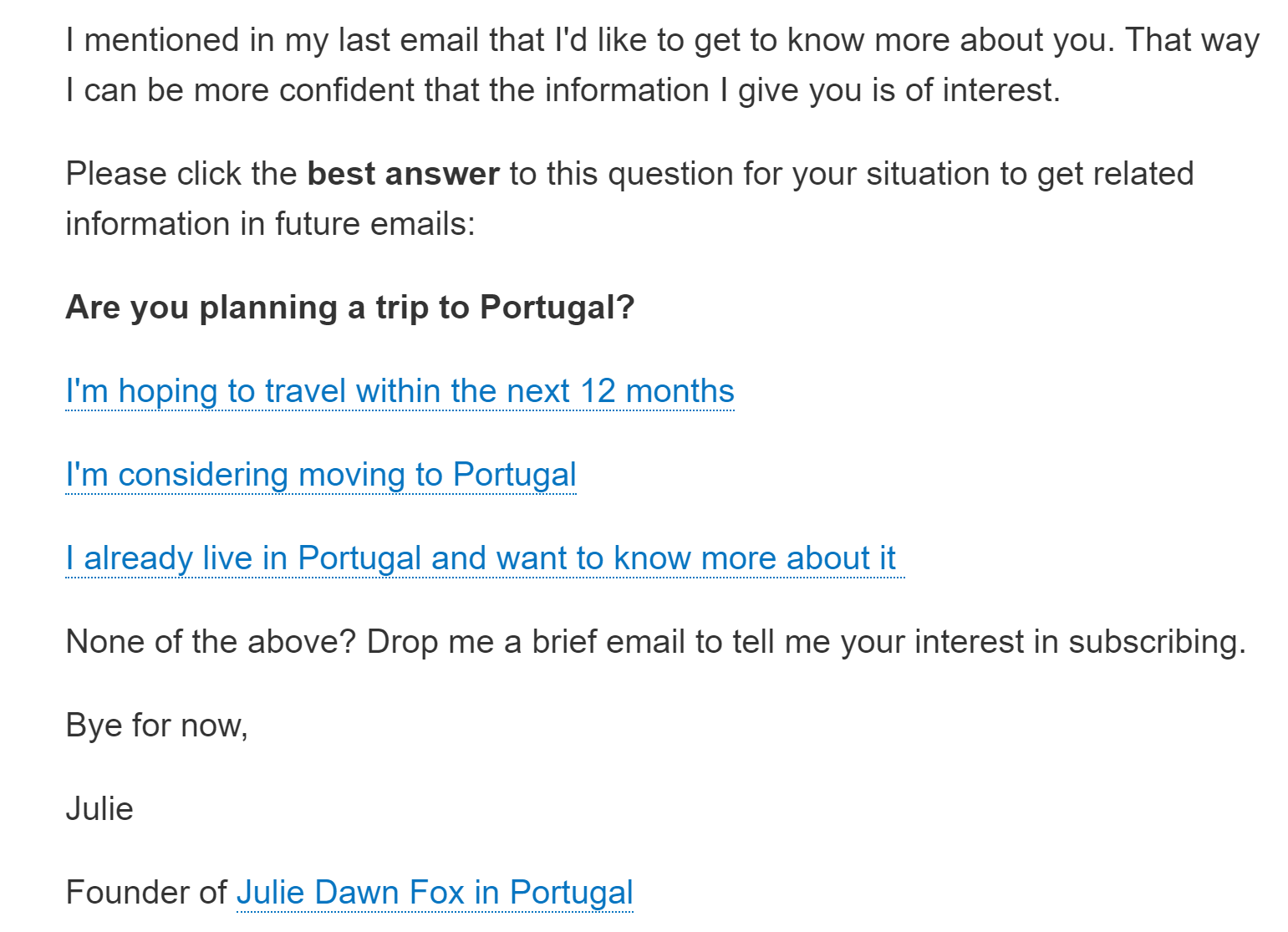
Segmentation is helpful for all audience targeting, not just ads! Armed with this information, Julie can also send readers offers for her trip-planning services as well as relevant affiliate offers.
Tip 2: Use native ads when possible
Native ads are ads that fit in well with the other content in your email and don’t “look like ads”. They are less obvious than display ads and are less likely to come across as spammy. Too many ads or irrelevant ads will be a turn-off for your audience.
Tip 3: Be selective with the brands you’re working with
The ethics and background of businesses you work with are as important as the product/service you’re advertising. Your audience needs to trust you and they won’t be able to if you sell out your platform for the sake of money.
4. Sponsored content
Sponsored content is content and information that brands pay you to present to your email audience on behalf of a brand or company.
Like ads, how much you can make from sponsored content depends on your rates. To determine a fair rate, consider your engaged audience size (measured through open rates and click-through rates) and how much effort goes into creating sponsored content.
While some brands will have templates and brand assets for you to work from, others will expect you to create content about their brand in your own style and voice.
The gold standard for sponsored content is long-term contracts (as opposed to one-off gigs). For example, a brand might sponsor one email a month for the next six months. This gives you more predictability with your revenue.
Also like ads, sponsored content can come across as spammy. Make sure you don’t bombard your audience with too much sponsored content. Stay honest with your audience about brand-sponsored content and selective about the offers you promote.
Tip: Always disclose sponsored content to your audience. This not only ensures transparency, but is also legally required in most jurisdictions. Stay on the right side of the law, and your audience, by properly disclosing.
5. Info products
Do you have useful or niche knowledge that will benefit your audience? Can you put it into a sellable format like an ebook, webinar, template, or course?
Then you have an info product.
An info product takes your knowledge and experience and turns it into a marketable and consumable item.
Prices for info products typically range from $5-50 for low-ticket offers like ebooks, into $500-$1,000 or more for high-ticket products like premium courses.
Here's an example from Gemma Bonham Carter, where she promotes her high-ticket course The Passive Project via email:
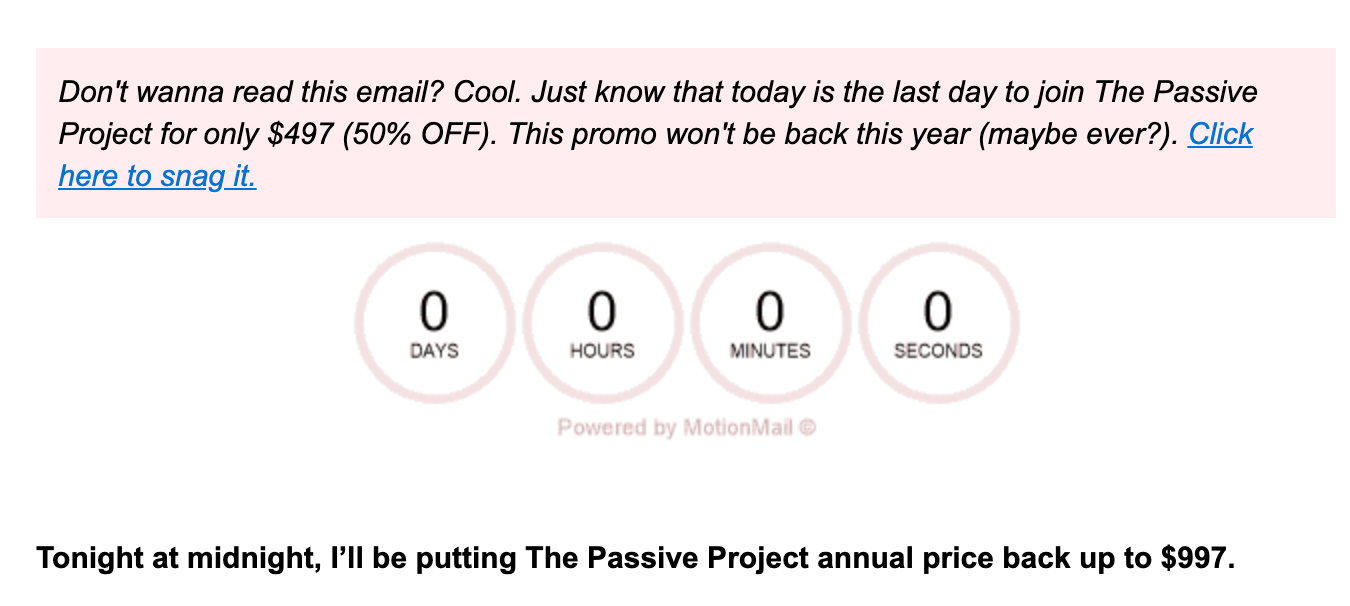
Making an info product from scratch is a lot of work, but can pay you for years to come.
The effort you invest into creating a high-quality info product will be noticed by your subscribers. The info product market is becoming more saturated by the day.
Comprehensive products that are priced right and deliver on quality will set you apart from the crowd (and earn you a slew of convincing testimonials for your landing page).
Confidence in your expertise goes a long way in making the sale, as does beta testing your info product in small groups before launching to your full list.
But before launching or even making your first sale, you need to choose a topic. How do you know what info product to create, so your audience will actually buy it?
Monetizing your email list with info products works best when the info product answers an audience question.
Discover what your info product should cover by engaging with your audience and asking them questions about the problems they’re facing.
Once you’ve decided on the type of product you want to create, give your audience a behind-the-scenes look at the process and ask for specific feedback along the way. Emails with a little snippet of an ebook, or a teaser video for a course with a key nugget of information, are both good ways to prepare your audience for your product's launch and create anticipation.
Sweeten the deal with early-bird discounts or bonus products in return for feedback.
Once you've gotten feedback and improved the offering, gather testimonials you can use to improve the conversion rate of your landing page, and go for a full-blown launch.
6. Paid newsletters
With a paid newsletter, your audience pays receive exclusive content in the form of a regular newsletter, on a weekly, monthly, or even annual basis.
A paid newsletter should offer your audience something they can't get anywhere else.
For example, your expert insight and key takeaways on current topics in your niche. Paid newsletters are great monetizable additions to already successful email lists, because you've already gone through the effort of establishing trust with readers.
Paid newsletters have lots of pros. They are extremely scalable because there is no limit to the size of your audience and revenue is predictable. Paid newsletters also keep your content unbiased, because you don’t need to make money from ads or sponsored content.
When pricing your paid newsletter, don't forget to consider the fees. Some of the most popular paid newsletter platforms include:
- Substack - Charges 10% + credit card fees
- ConvertKit - Charges 3.5% + 30c per transactions
- Ghost - Charges a monthly platform fee, 0% on transactions
Because they're so scalable, paid newsletters are often “cheaper than a cup of coffee” and charged monthly. As the creator, you can afford to keep the price low because it doesn't cost you anything to have more subscribers.
That said, some bigger publications, such as The Economist and the New York Times, charge as much as $20/month. How much you can charge depends on who your audience is, especially if the subscription chalks up to a business expense.
Josh Spector, for example, offers audiences two purchase options for his This Is How I Do It newsletter. Readers can choose either an annual subscription or to buy individual editions:

Tip: Regardless of how often you send your newsletter, add an annual subscription option as this will reduce churn from one month to the next. It's a lot easier to prove the value of your newsletter over a 12 month time period than it is after every send.
7. Consulting
Offer your expertise to your audience in a one-on-one format with consulting.
This is a great way to start monetizing your email list because the insights you gain into your target audience are valuable for other methods of monetization.
Wondering how much to charge? Consulting is a high-ticket item. Because you’re giving your audience direct access to you, the price can be quite high relative to less personalized offers like ebooks or courses.
However, consulting is tough to scale.
You only have so much time to give and providing value in this one-on-one format requires a lot of effort. Make sure you have a structured process to save you time and energy in the long run, so you're only taking on consulting work you'll enjoy.
Packages are a great way to do this and also add a level of revenue predictability.
Here's an example from Soledad Fernández Paulino from Wealth Para Todos, who offers a package of 12 sessions for $3,000.
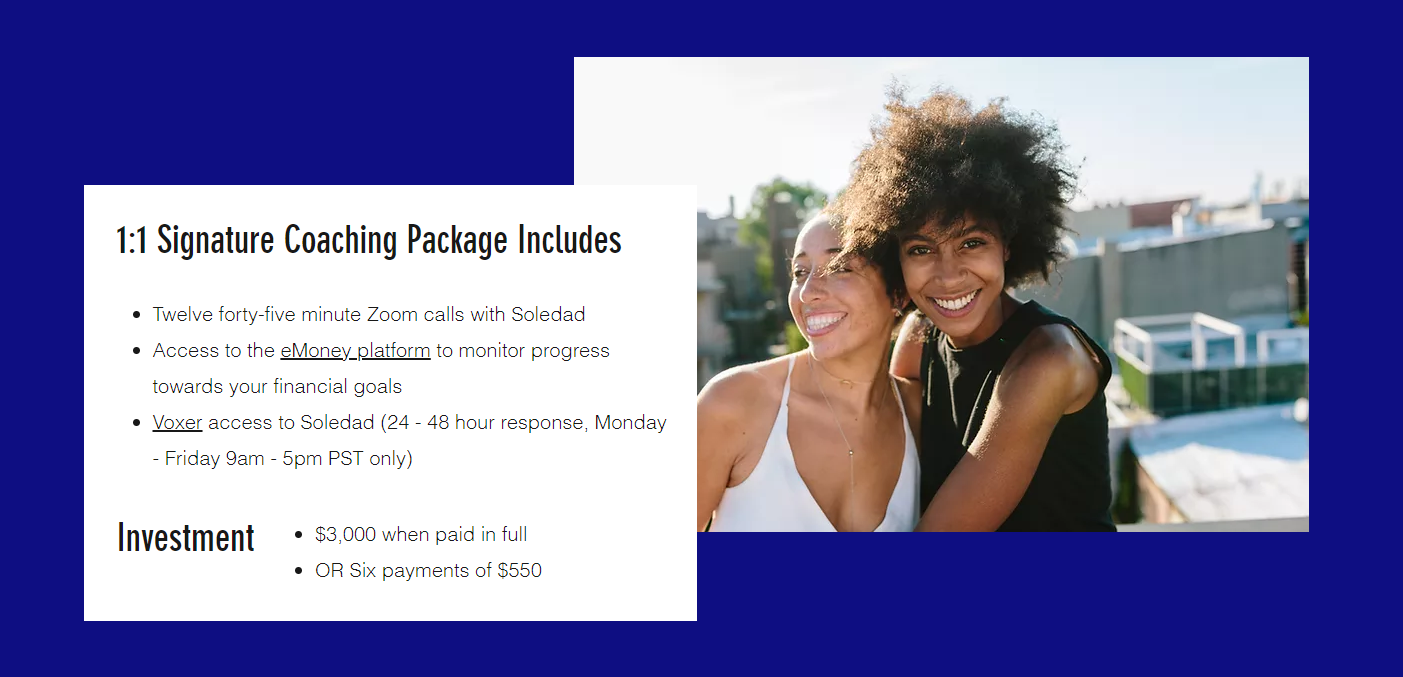
8. Tripwire offers
Tripwire offers are inexpensive offers presented to new email list subscribers.
They are a way to increase your chances of repeat buyers by immediately turning subscribers into buyers. According to the Adobe Digital Economy Index, repeat buyers are nine times more likely to convert than first-time buyers.
Because of this, a tripwire offer isn’t necessarily profitable. Rather, it’s an entryway to a higher offer. Think of it as an investment into your business.
While they may not make much money, tripwire offers make up for it by moving your audience closer to higher-ticket offers.
Once you’ve found an offer that works — whether it’s a template, guide, ebook or a discount on a higher-ticket item — the process can be completely automated for all new subscribers to your list.
Just because it isn’t a high-ticket item doesn't mean you should compromise on the quality of your offer. Your audience is more likely to buy from you in the future if their first experience exceeds their expectations.
Here's an example from the paid newsletter The Information, which resurrects cold leads by offering a steep discount on their annual plan.
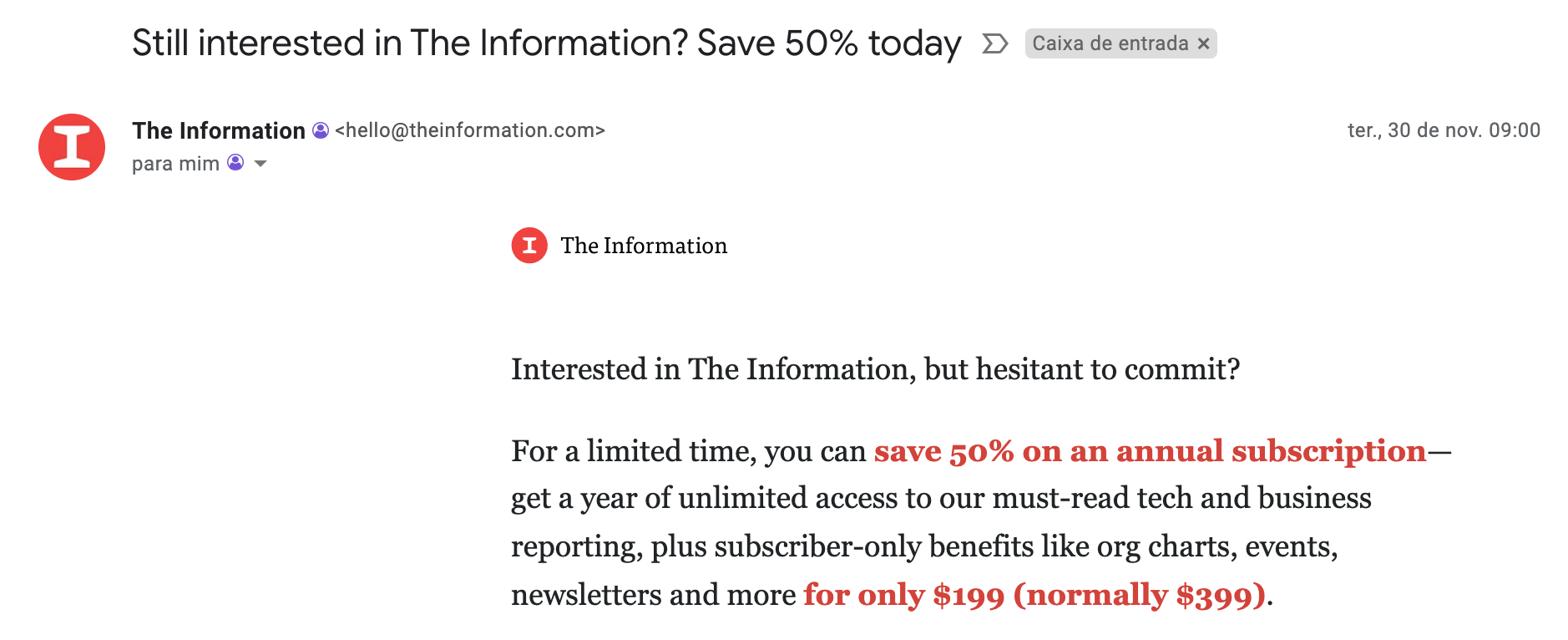
9. Email courses
Email courses are courses delivered primarily — although not always entirely — through email. They’re made up of a series of lessons and are usually geared towards solving a particular problem or providing comprehensive information on a single topic.
Email courses often include an offer for a product or service that addresses the problem tackled at the end of the series.
A successful email course needs to include actionable tips and expected results throughout. Make sure your audience knows what to expect in the next lessons and is gaining value with every email.
Remember: your industry knowledge and unique insight is the key to success here.
Email courses are one of the easiest monetization methods around. They require some initial effort but after you’ve put together your course, the process becomes passive.
Although there are ways to charge for an email course by delivering in-depth info or pairing the email course with a course on a different platform like Coursera, the course itself isn’t always profitable
You can use email courses in the place of a welcome series. Email courses are a great way to showcase your knowledge and they have opportunities to integrate various upsell offers throughout.
For example, Adrienne Smith offers a content strategy email course that outlines exactly what you’ll learn when you sign-up.

In her case, she uses the course as a lead magnet to then sell other offers to subscribers, such as her Content Strategy Toolkit:
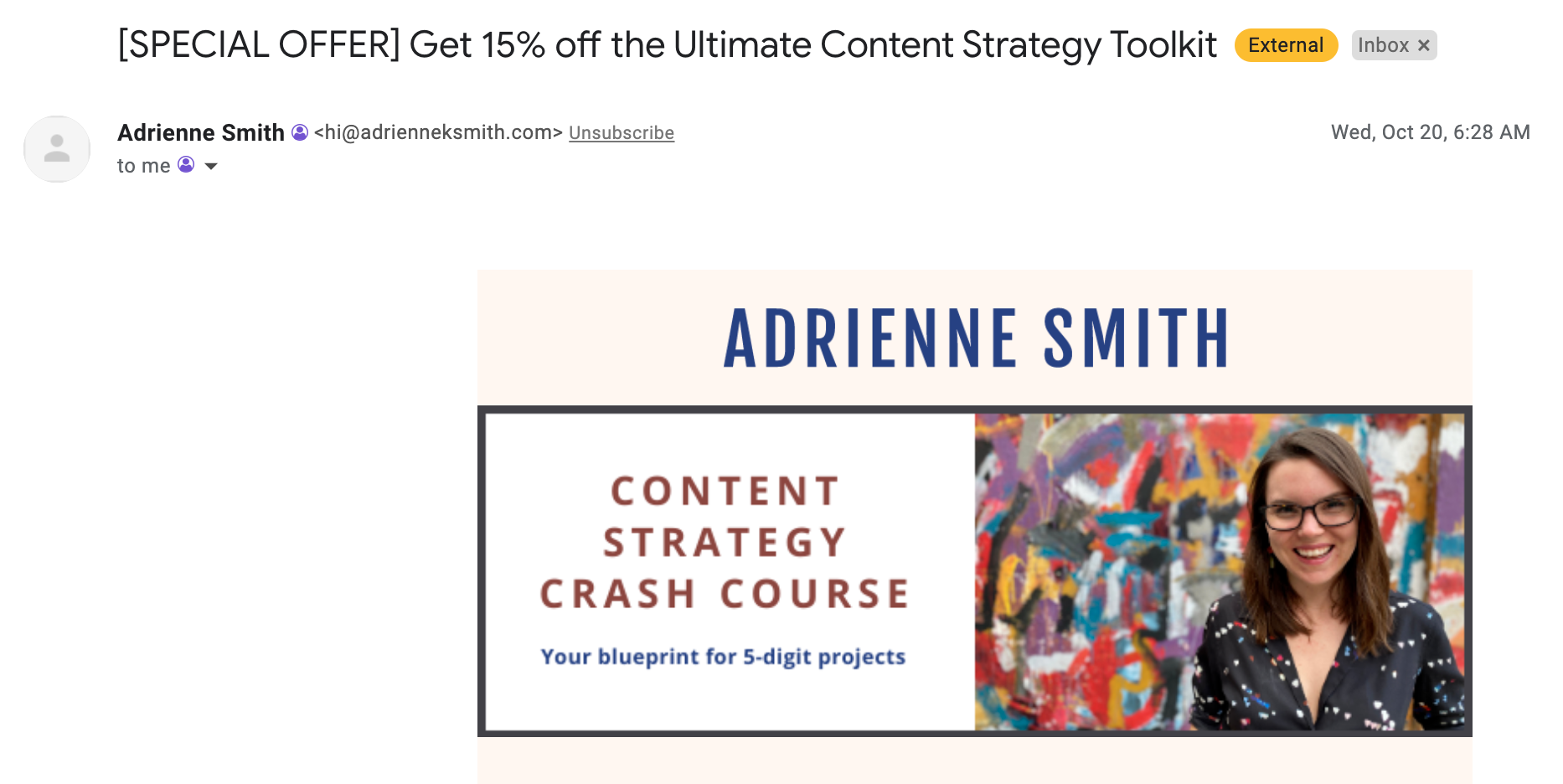
Which email monetization method is right for you?
Email is still one of the most cost-effective marketing tools around. It puts you in direct communication with your audience and adds a level of personalization that you can’t get in a blog or social media post.
There are lots of ways to monetize email lists and present offers to your audience, including passive and active forms of income.
But remember, there’s no need to try everything at once. And not every email monetization method fit your audience, and few things are worse than launching an offer your audience doesn't actually want.
The first step, as always, is to understand your audience.
Talking to your subscribers one-to-one is the best way to discover their pains and dreams, so you can create a fix in the form of a paid offer they'll want to buy.
One of the best ways to do this is asking questions in your emails to elicit replies, and then build relationships with individual subscribers.
Once you've learned how to serve 10 specific subscribers, you'll be in a good place to serve hundreds or thousands with your paid offer.
